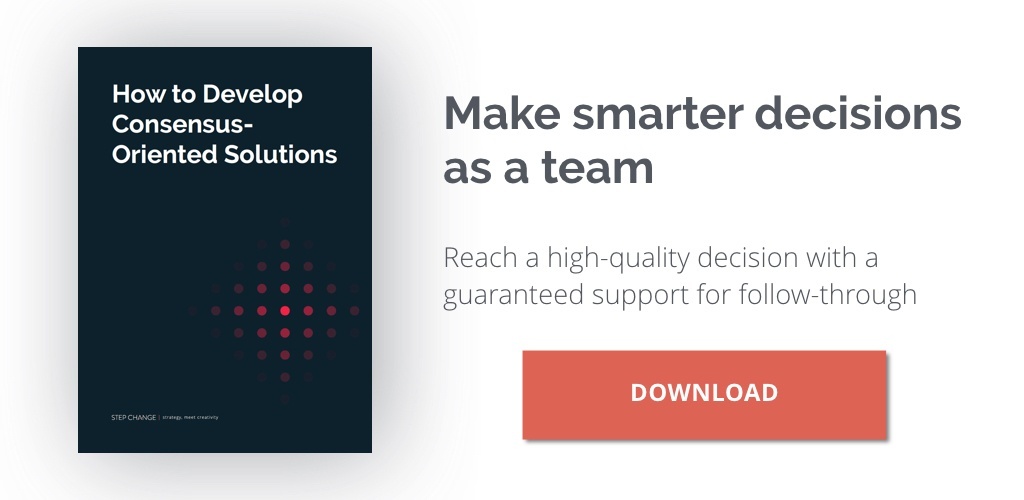28 January 1986 completely changed the way NASA operates. Here’s why:
That day marked the space shuttle Challenger’s tenth mission. But the day before, the engineers had warned the mission control centre that the cold weather forecast on launch day would pose risks: they had not tested the O-ring seals below 53 degrees Fahrenheit (a critical part of the rocket).
The response of the mission control centre? Nothing. They disregarded the safety issue and proceeded with the mission. And for fear of negative press, they did not release any information regarding the safety issue.
And so, on that day, Challenger blasted off. 73 seconds after, it exploded and plunged into the Atlantic Ocean, taking with it the lives of the seven-person crew.
NASA had launched successful rocket ship missions before — so why did they fail this one?
Answer: They made the wrong decision — despite risky conditions, NASA censored the dangerous information to obey stakeholders.
Why Faulty Decisions Happen
When a team wants to arrive at a consensus decision right away — without even thinking it through — groupthink happens. This is where a team overlooks alternative options, rejects an unpopular opinion, or ignores a thorough exploration of another option.
The result? Poor judgment, a faulty outcome, and — worst-case scenario — risked lives.
Groupthink usually occurs when the leader of the team is forceful and persuasive, when the team strongly desires cohesion, and when there’s external pressure that forces the team to make a decision.
How to Know If Your Team Is Experiencing Groupthink
Janis Irving, the psychologist who developed a comprehensive theory about groupthink, cited eight symptoms of this phenomenon.
- Collective rationalisation: The team thinks that the decision presented is the correct one, even if there are sources that say otherwise.
One famous example was the campaign US launched against Iraq and Saddam Hussein in 2003. The US president and the Congress did not reconsider their assumptions — that Iraq possessed weapons of mass destruction — even as other countries had challenged them on their decision. In the end, they found out that indeed there were no weapons of mass destruction there.
- Peer pressure: This occurs when a solitary voice in the team questions the decision or expresses an opposing view. Often, the rest of the team, in a desire to reach a group consensus, will pressure the person to conform, or tell the person to “feel free to leave the group”.
- Complacency: This happens when the team has been through a few successes and they fall into the confidence trap of feeling like they can take on anything effectively. This leads them to believe (often mistakenly) their decision is the best one.
An example of this is Marks & Spencer and the British Airways. In the nineties, they announced globalisation strategies that, due to their illusion of invulnerability, led to the fall of their reputation and stock market value.
- Moral high ground: When everyone in the group is moral, they will believe that they are not prone to making poor or immoral decisions. With morality regarded as basis for making decisions, any individual is pressured to confirm for fear of being branded as immoral.
An example of this is the collapse of Swissair, a financially stable Swiss airline company, which earned them the moniker “The Flying Bank”. The company believed that it was invulnerable and that its morality was superior. But the CEO’s poor decision to reduce its company board became the cause of Swissair’s collapse, losing the competent industry expertise that came with the board.
- Stereotyped views of outsiders: Mutual agreement within the group causes them to perceive outsiders as having different and inferior views, and this will be the basis of discrediting outsiders’ opinions.
- Censorship: Dependent on the culture of an organisation, members might choose to keep their personal opinions to themselves — especially those that deviate from the popular consensus in fear of retaliation.
This was evident in the failed mission at the Bay of Pigs — American president John F. Kennedy made a decision, and his advisors backed him despite their personal apprehensions that this mission would likely fail.
- Self-appointed ‘mind guards’: When cohesion is valued more than making the right decision, certain members might choose to filter information that can cause problems, raise doubtful questions, or destroy the team’s efforts to achieve cohesiveness.
- Illusion of unanimity: This happens when no one in the group speaks out to offer a different view (despite there being so), causing all members to see unanimity. This behaviour, if repeated, will become a habit and lead to a lot of bad decisions in an organisation.
Harvard Business Review cites as an example the BP oil spill. Some of the members of the company knew about and reported to their leaders the faulty well casing and blowout preventer, but the organisation still went ahead with the operation, resulting to the disaster. If a thorough dialogue took place, it could have prevented the accident.
What You Can Do as a Leader
First, make use of decision-making tools specifically designed to aid teams in coming up with a solid decision that’s been thoroughly analysed and backed by the majority of decision-makers.
Second, since members tend to look to the leader for all the talking and decision making, try not to express your preference or opinion at the start as it may bias the beliefs of those in your team. Make space for others to voice their views before you voice yours.
Third, when team members do speak up, don’t shut them off by telling them how bad their ideas are. Instead, build from their opinions and let them feel that their opinion has been heard and appreciated. The lesson from the 28 January 1986 is that the cost of silence can be high.
Fourth, ensure that a substantial amount of time is allotted to study various options and possible roadblocks.














